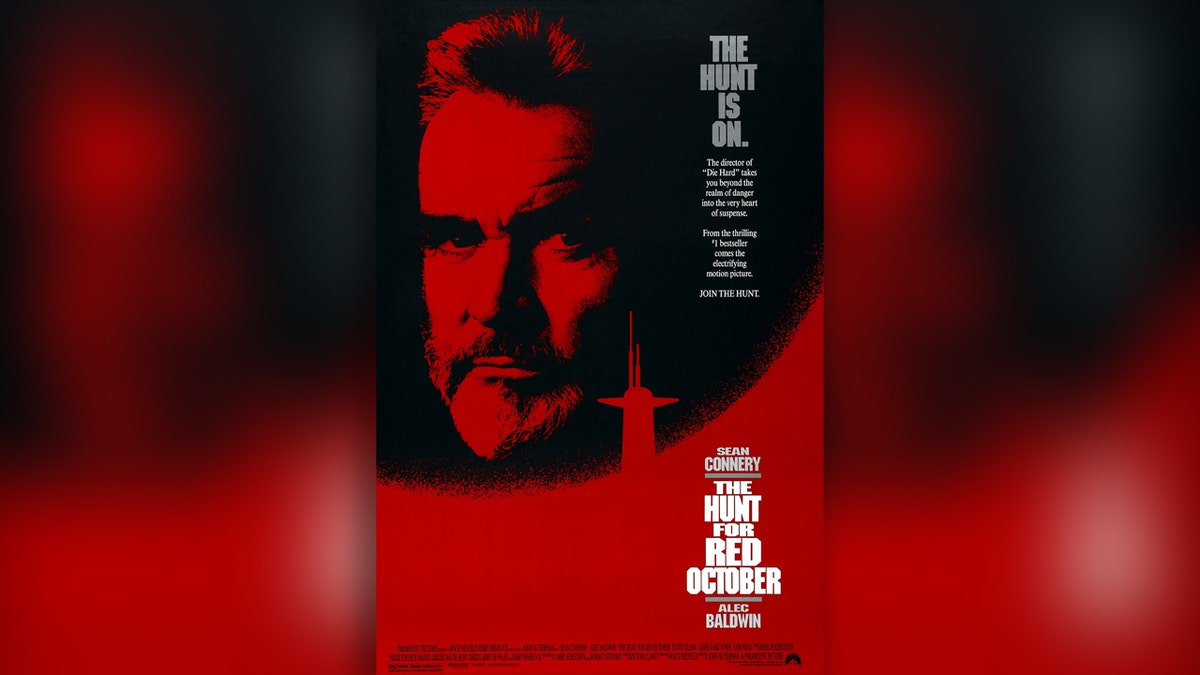Fox News Flash top headlines for March 4
Fox News Flash top headlines are here. Check out what's clicking on Foxnews.com.
Thirty years ago this month, “The Hunt For Red October” was released in the United States. The film is important because it taught my generation a truth known well by our parents and our grandparents: It is virtually impossible to screw up a submarine movie.
Is it heightened drama born of salty submariners jammed into the confined space of control rooms “rigged for red”? The simultaneous dangers of fire and water, burning and drowning, explosion and implosion? The terrifying suspense of depth-charge attacks? Yes, yes and yes!
But the genre’s advantages alone cannot explain the staying power of “The Hunt For Red October”. The truth is, the movie taught Generation X, my generation, so much more. As befits a submarine movie, we must go deeper when considering what makes the film so special, even after 30 years.
MIKE KERRIGAN: WHAT I LEARNED ON MY 'FIRST' COLLEGE VISIT WITH MY SON
First, the story. Set in November 1984, Soviet Capt. Marko Ramius is the commander of "Red October," an advanced nuclear missile submarine that can move about undetected by American sonar. Knowing what a lethal first-strike weapon he has at his command, Ramius wishes to defect to the United States with his fellow officers and Red October.
CIA analyst Jack Ryan divines Ramius’ true intentions right about the same time the Soviets do. Given three days to prove his theory, Ryan is literally dropped into the Atlantic Ocean, charged with finding Red October and somehow effectuating defection before the Soviets, themselves in lethal pursuit, destroy the submarine.

The acting is equal to the story. Sean Connery’s portrayal of Ramius is sublime. Same goes for Alec Baldwin as Ryan, gritty Scott Glenn as Cmdr. Bart Mancuso and ineffable James Earl Jones as Adm. James Greer. Sam Neill as Capt. Vasili Borodin is a war-movie cliché for inevitable death – no less than the soldier who shows his buddy a picture of his beloved on the eve of battle – but he’s great.
Beyond the A-Listers, Richard Jordan as National Security Advisor Dr. Jeffrey Pelt is a mellifluous charmer who could tell you to go to hell and make you look forward to the trip. And Fred Thompson is so statesmanlike as Rear Adm. Joshua Painter that he later became a Republican senator and presidential candidate. Life imitating art!
Great acting is nothing without great writing, and mercy, does this script stand out like a beacon. Even today, to go “Red October” is synonymous with going inexplicably quiet on someone, “ghosting” in a pre-social media era. And then there’s a “Crazy Ivan,” the abrupt turn favored by Ramius aboard the Red October in order to use sonar to detect objects trailing it.
A Crazy Ivan is now widely understood as any abrupt change in direction. For instance, if a man suddenly turns across two lanes of traffic in order to make an exit to his girlfriend’s apartment, only to find she has moved out with no warning, two Crazy Ivans have occurred, one literal and the other metaphorical.
CLICK HERE TO GET THE OPINION NEWSLETTER
That’s the kind of hold this movie had, and has, on popular culture. Beyond Red October and Crazy Ivan, the movie introduced into civilian conversation other notions like a torpedo not having time to arm, releasing countermeasures and my personal favorite, having the conn. Simply put, the writing was very smart and very cool.
More from Opinion
Many movies tell compelling stories with great acting and writing, though. I think what sets “The Hunt For Red October” apart is its great message, one that never seems out of sync with the times. This is because it’s a message of hope, though set amid the Cold War, about our common humanity.
We who came of age in the Eighties remember the mutual mistrust that marked the United States and Soviet relations. Yet the two main characters, American Ryan and Soviet Ramius, ultimately want the same thing: to live, to laugh and to love in a world that is free. Ryan had it, but against all odds sensed in Ramius a kindred spirit, a human soul yearning to breathe free. And so he did something about it.
Sure, world annihilation hangs in the balance. That’s what makes it such a gripping story. But Ramius’ journey to America wasn’t primarily political or ideological, it was spiritual. Ryan saw this, beyond the superficial to the essence of things, and that made all the difference. It’s ultimately a tale of redemption. We never tire of hearing the tale because this particular longing is etched upon every human heart.
There is always hope for peace – whether of the world, political or even just familial variety – when we don’t lose sight of our common humanity. These are strident and unsettling times, but in the words of St. Thomas More – in an age a tad more trying for him personally – “the times are never so bad but that a good man can live in them.”
CLICK HERE TO GET THE FOX NEWS APP
Like Ryan and Ramius, our world today makes it easy to see only what divides us. But also like Ryan and Ramius, good men, what joy awaits us when we, as they did, learn to recognize the common longing that unites us all.
This is why I believe “The Hunt For Red October” will never go out of style. That and the depth-charge attacks.





















